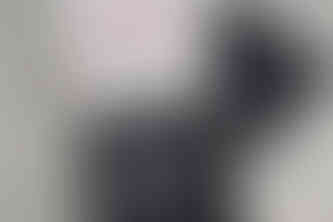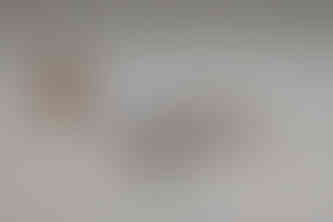3D Design Deck: Revolutionizing the Precision Airplane Model Industry
- Jorge A. Zajia

- Jan 8
- 5 min read
Three-dimensional printing (3D printing) is a technology that can trace its roots to the 1940s, but many of us probably heard about it for the first time sometime in the last couple of decades, as that is when 3D printers started to appear in schools, offices, and households.
In the precision airplane model world (can't use the phrase "die-cast airplane model" here, although the models we are going to talk about have more in common with them than with any other type of aircraft models) 3D printing has already been used extensively. Many ground service equipment makers have been in business for a few years, and we have already seen the first "big" 3D-printed airplane model brand come and go (Shapeways).
However, nobody has quite cracked down the crowd-pleaser formula and captured the full potential of 3D printing in the airplane model world just yet. Shapeways was too big, which ultimately made them unsustainable, and they focused on blank models instead of ready-to-display models. Others are too small: customizers and artisans of sorts that aren't going for mass production.
There is a brand, however, that is starting to become a major player in the precision airplane model world and shows no signs of stopping: 3D Design Deck, a family-run company based in Toronto, Canada.

3D Design Deck models have absolutely nothing to envy to traditional die-cast airplane models. The models come safely packed in the same way die-cast models do, they have the same level of detail that all modern die-cast brands offer (even more in some cases), and they look just as good.
Below you can see detailed photos a 1:200 scale USAF Fairchild Metroliner and its packaging by 3D Design Deck:
Of course, 3D Design Deck Models have some key differences from traditional die-cast airplane models, but there are advantages as well.
How do 3D Design Deck Models differ from die-cast airplane models?
As you would expect, they are lighter. They are made out of resin, so the fuselage is solid while the wings and tail feel similar to the plastic used strategically by many die-cast brands such as Herpa, Dragon Wings, and more recently YRD Models.
Wheels don't roll. However, propellers do spin. 3D Design Deck has been improving its products at a fast pace, so I wouldn't be surprised if rolling wheel capability is eventually achieved - Though it isn't a necessity, and many modern die-cast models don't have rolling wheels to begin with.
Some artwork elements are of slightly lower resolution than that achieved with pad-printing. However, the artwork of 3D Design Deck models is printed onto the model using UV technology, so they feel as smooth as die-cast models, and there are no decal edges present (unlike your average homemade custom).
Comparison between two Canadian Dash 8s. Die-cast (metal) versus 3D-printed (resin):

While I have no real experience with the fragility of 3D Design Deck Models (I haven't dropped one yet), I believe they are no more fragile than die-cast models. After all, I just received 13 models that were shipped from Toronto to Houston and they all arrived intact.
When a die-cast model falls, it usually suffers from paint scratching, dents, bent parts, and detached parts. Metal can be bent back into shape in some cases, detached parts can be re-glued, and the model can be repainted. I have a feeling that the small parts of a 3D-printed resin model will likely break cleanly if the model falls, in which case the parts can be glued back in place. By being lighter, resin models could be more resistant to scratches. In any case, a model that falls will likely never be the same whether it is made out of resin or metal.
Advantages of 3D Design Deck Models
The most obvious advantage of 3D printed models is that they allow us to obtain scale models of rare and unique aircraft types. Namely, small propliners, executive jets and turboprops, fighter jets, helicopters, and general aviation aircraft, all of which are almost nonexistent in the 1:400 scale die-cast world, and scarce in 1:200.
But the potential of 3D printed models doesn't stop with small and niche aircraft. Popular airliners that have been forgotten or disregarded by major die-cast brands can also be put onto store shelves with the use of 3D printing. 3D Design deck has already tapped into this market with a very nice 737-200 mold (1:400) and has some exciting plans for the future.
AirTran Airways Boeing 737-2L9 3D Design Deck 1:400:
Check out how the AirTran 737-200 made using resin fits in among die-cast models:

Another advantage is the potential for exclusive releases. Many of the die-cast brands do offer this service, but there is no shortage of obstacles as it is difficult to get in touch with many of them and the terms and conditions can be discouraging. The brand with the best terms to produce exclusive die-cast airplane models is Panda Model, but their mold catalog is rather limited. Developing new aircraft types using 3D printing is a lot easier than doing so in die-cast. Production costs and minimum required quantities are also more reasonable in the 3D printing world.
Also, it is nice to have model manufacturers based in the West as language barriers and time zone differences that exist between the West and China represent no small hurdle. Not to mention that production costs in China are becoming less competitive. Still, we will likely not see full mass production of scale airplane models leave China for the Americas any time soon, if ever at all. And thinking of resin 3D printing replacing die-cast metal as the method of choice for the mass production of scale airplane models is far-fetched, to say the least. Nonetheless, it is encouraging to see someone doing the best they can with what they have to help the cause.
Another advantage of having 3D Design Deck doing what they are doing on this side of the planet is that QC issues can be addressed much more effectively.
Finally, 3D-printed models tend to be cheaper than die-cast models. Make no mistake, I can tell there is a huge amount of effort and energy that goes into the production of 3D printed models, but if anything, shipping costs alone represent a substantial advantage over Made in China die-cast models.
Assortment of Air Canada Jazz Dash 8 Q100s by 3D Design Deck in 1:400 scale:
I cannot speak for all 3D printed models that are available in the market, but I can tell you that 3D Design Deck models stand up quite well to their die-cast counterparts. Give them a try! I doubt you'll be disappointed.
Support both, the site and 3D Design Deck by purchasing their models at www.yankeevictor400.shop
Click below to see our 3D Design Deck catalog:


















































Comments